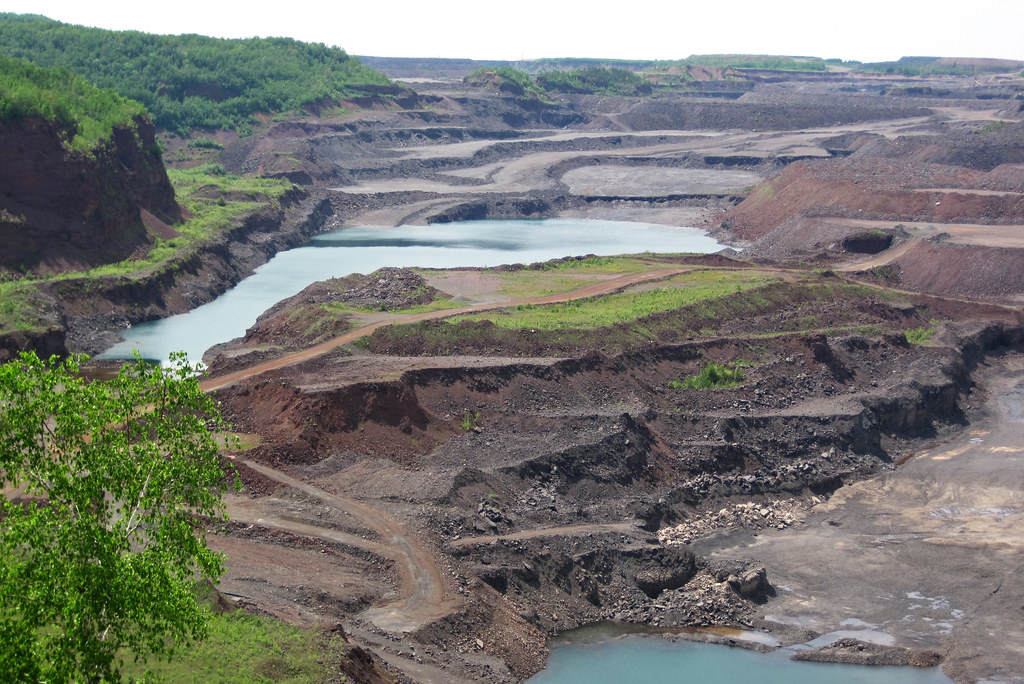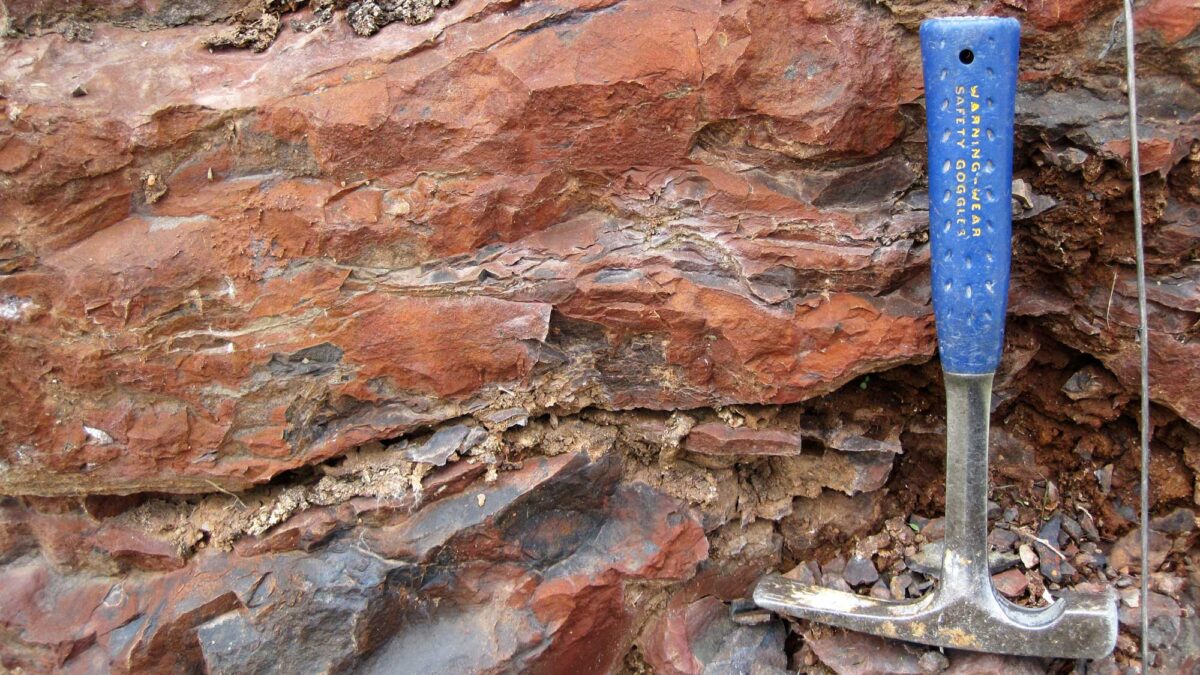Snapshot: Overview of the mineral resources of the Superior Upland region of the midwestern United States, including northern Minnesota, northern Wisconsin, and the Upper Peninsula of Michigan.
Topics covered on this page: Overview; Resources.
Credits: Most of the text of this page is derived from "Mineral resources of the Midwestern US" by Alex F. Wall, chapter 5 in The Teacher-Friendly Guide to the Earth Science of the Midwestern US, edited by Mark D. Lucas, Robert M. Ross, and Andrielle N. Swaby (published in 2014 by the Paleontological Research Institution). The book was adapted for the web by Elizabeth J. Hermsen and Jonathan R. Hendricks in 2022–2023. Changes include formatting and revisions to the text and images. Credits for individual images are given in figure captions.
Updates: Page last updated August 6, 2023.
Image above: Deposit of iron ore (taconite) from the Proterozoic Biwabik Iron Formation of Minnesota. Photograph by James St. John (Flickr; Creative Commons Attribution 2.0 Generic license).

Overview
The Superior Upland portion of the Canadian Shield is composed mostly of igneous and metamorphosed Precambrian rock. Plumes of magma that welled up from the mantle (and then cooled) formed expanses of igneous rocks like granite, basalt, and gabbro. Sedimentary rock, including banded iron formations, formed as sediment slowly accumulated under the ancient ocean. Later, metamorphism converted much of the igneous rock into gneiss and the sedimentary rock into quartzite. Some nickel, copper, and platinum are produced in the region, but these are secondary products in the mining of the Superior Upland’s dominant mineral resource: iron. Minnesota and Michigan are the states that produce, respectively, the most and second most iron ore in the US. The ore, primarily hematite (Fe₂O₃) and magnetite (Fe₃O₄), is mined from banded iron formations.
In Minnesota, iron is principally produced from the aptly named Biwabik Iron Formation in Itasca and Saint Louis Counties.

Reddish-brown deposits of the Proterozoic Biwabik Iron Formation (~1.9 Ga) being mined at the Hull-Rust-Mahoning Mine in Minnesota. Photograph by James St. John (Flickr; Creative Commons Attribution 2.0 Generic license).
Two large open pit mines operate in Marquette County, in the Marquette Range found in the north central portion of Michigan’s Upper Peninsula. Most of the iron is used to make steel. The portion of the Superior Upland found in Wisconsin is not yet used for mineral resources. It is, however, quarried for stone used in construction and industry.
Resources
Resources from the Paleontological Research Institution
Digital Atlas of Ancient Life: Minerals (collection of 3D models on Sketchfab): https://skfb.ly/6WxTo
Digital Encyclopedia of Earth Science: Minerals: https://earthathome.org/de/minerals/



